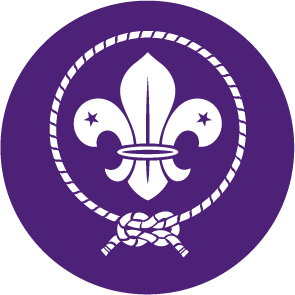Who Scouts in a place like this?
You’ll need
- Scissors
- World map
Before you begin
-
Use the safety checklist to help you plan and risk assess your activity. Additional help to carry out your risk assessment, including examples can be found here. Don’t forget to make sure all young people and adults involved in the activity know how to take part safely.
-
Make sure you’ll have enough adult helpers. You may need some parents and carers to help if you’re short on helpers.
Setting up this activity
- Print the ‘Global Beaver Scouts puzzle pieces’ onto card or thick paper. Alternatively, you could print them onto paper, then cut them out and stick them onto card.
- Cut the sheets into pieces to make a jigsaw puzzle. Think about how many people will be in each team. You should make sure there are at least enough pieces for everyone to have at least one each.
- You can make the game easier or harder by cutting the jigsaw into more or fewer pieces.
- If you think you’ll need more than four groups, prepare more than four jigsaws. You can just use some countries twice.
- Shuffle each jigsaw up, then put them in their separate piles at one end of the space.
Play the game
- Gather everyone together. Explain that you're having a jigsaw relay race to learn about different counties around the world.
- Get everyone into four teams (or more if needed).
- Each team should line up at the end of the space opposite the jigsaw puzzle piles. You may want to use cones or markers to show their starting point.
- When the game starts, the first player in each team should go to their team’s jigsaw puzzle pile. They should pick up a piece and take it back to their team. When they get back, the next person in the line should go.Everyone should continue collecting the pieces, with the person at the front of line going as soon as the person before them arrives back.
- As soon as a team has collected at least two pieces of the puzzle, they can start piecing them together. Once each player has collected their puzzle piece, the team can put the puzzle together. The last person to go should check that all the pieces have been collected—depending on the size of the team, some people may need to go twice.
- Once the puzzle is finished, each group should read the information on the puzzle to learn more about another country. They should think about what’s similar and what’s different to their experiences in Scouts.
Share facts
- When everyone's ready, gather back together in a circle.
- Each group should tell everyone the name of the country they were given and some of the facts they learned.
- You could give each group a world map, so they can see if they can find the country the other groups are talking about.
Reflection
This activity reminds you that you’re a local, national, and international citizen, especially as part of a worldwide family of Scouts. Someone from each group should read the Promise from their country. How are the different Promises similar to your Beaver Scout Promise? They’re all based around helping each other—that’s one thing you have in common, even though they live a long way away. What other things are the same between you and the people in other countries?
This activity also reminded you to respect others. How does it make you feel to be part of a worldwide family? It may make you feel proud. Were things in the other countries exactly the same, or a bit different? Even though some of the details were different, you share important themes like helping others. What’s more important, little details (such as what you wear), or joining together to care for other people?
Safety
All activities must be safely managed. You must complete a thorough risk assessment and take appropriate steps to reduce risk. Use the safety checklist to help you plan and risk assess your activity. Always get approval for the activity, and have suitable supervision and an InTouch process.
- Scissors
Supervise young people appropriately when they’re using scissors. Store all sharp objects securely, out of the reach of young people.
- Active games
The game area should be free of hazards. Explain the rules of the game clearly and have a clear way to communicate that the game must stop when needed. Take a look at our guidance on running active games safely.
- Mix all of the jigsaws into one pile for an extra challenge. You could copy the sheets onto different coloured paper, or put a coloured dot onto each set to give people a hint.
- The puzzles don’t all need to have the same number of pieces—you may want to make some trickier than others so everyone is challenged.
- You may want to find a Scout group in another country to get in contact with—you could email, write, or video chat. People may want to ask about their language, food, or customs. You can find some tips in our international links guidance.
- Make sure groups have any support they need to read the facts. If anyone’s a confident reader, they could read out loud.
- Adapt the puzzle as needed for anyone with additional needs that mean they need a certain paper colour or font size.
- If anyone struggles with fine motor skills, it may be helpful to put the pieces on foam or thicker card.
All Scout activities should be inclusive and accessible.

